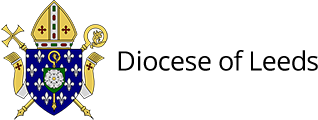Religious Education: Vision & Purpose
‘Religious education is more than just one subject in the curriculum. In Catholic schools it is the core of the “core curriculum”’.
(Pope St. John Paul II, 1988)
At the heart of every Catholic school is the person of Jesus Christ. This presence of Christ is in the present tense: it is a real presence, in the here and now. Recognition of it impacts on everything a Catholic school is and does, not least its religious education. And Jesus Christ, the person whose
presence the school proclaims, is the Word made flesh, the God who emptied himself and made himself small for our sake, ‘small enough to fit into a manger’. That is, at the heart of our schools, as at the heart of our faith, there is a commitment to a paradoxical wisdom that can seem like
foolishness to the world (1 Cor 1:23): a person who is fully God and fully human. Such a paradox defies our simplistic binaries, disrupts our complacency, and confounds the world, but finds its resolution in the person of Christ. In him alone, we are able to grasp how it can be that apparent paradoxes turn out to be life-giving truths: where the last shall be first (Mt 20:16), where weakness is strength (1 Cor 12:10), and where death leads to life (Mt 16:25). The purpose of both Catholic schools and Catholic religious education reflects this wisdom.
Religious education is religious also because its central subject matter is ‘the comprehensive and systematic study of the mystery of God, of the life and teachings of Jesus Christ, the teachings of his Church, the central beliefs that Catholics hold, the basis for them and the relationship between faith and life’. Any education must presume an anthropology and religious education will present a Christian anthropology as part of its authentic area of study. At the heart of Catholic education lies the Christian vision of the human person. This vision is expressed and explored in religious education, which recognises the human person as one ‘created in “the image and likeness” of God… unfaithful to God in original sin, but redeemed by Christ… [and] destined to eternal life’.
The Religious Education Directory (RED 2023) makes the aims of Religious Education explicit:
1. to engage in a systematic study of the mystery of God, of the life and teaching of Jesus Christ, the teachings of the Church, the central beliefs that Catholics hold, the basis for them and the relationship between faith and life;
2. to enable pupils continually to deepen their religious and theological understanding and be able to communicate this effectively;
3. to present an authentic vision of the Church’s moral and social teaching to provide pupils with a sure guide for living and the tools to critically engage with contemporary culture and society;
4. to give pupils an understanding of the religions and worldviews present in the world today and the skills to engage in respectful and fruitful dialogue with those whose worldviews differ from their own;
5. to develop the critical faculties of pupils so to bring clarity to the relationship between faith and life, and between faith and culture;
6. to stimulate pupils’ imagination and provoke a desire for personal meaning as revealed in the truth of the Catholic faith;
7. to enable pupils to relate the knowledge gained through religious education to their understanding of other subjects in the curriculum.
The outcome of excellent religious education is religiously literate and consciously engaged young people who have the knowledge, understanding, and skills – appropriate to their age and capacity – to reflect spiritually, and think ethically and theologically, and who recognise the demands of religious commitment in everyday life (RED 2023 p6).



